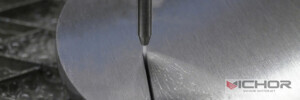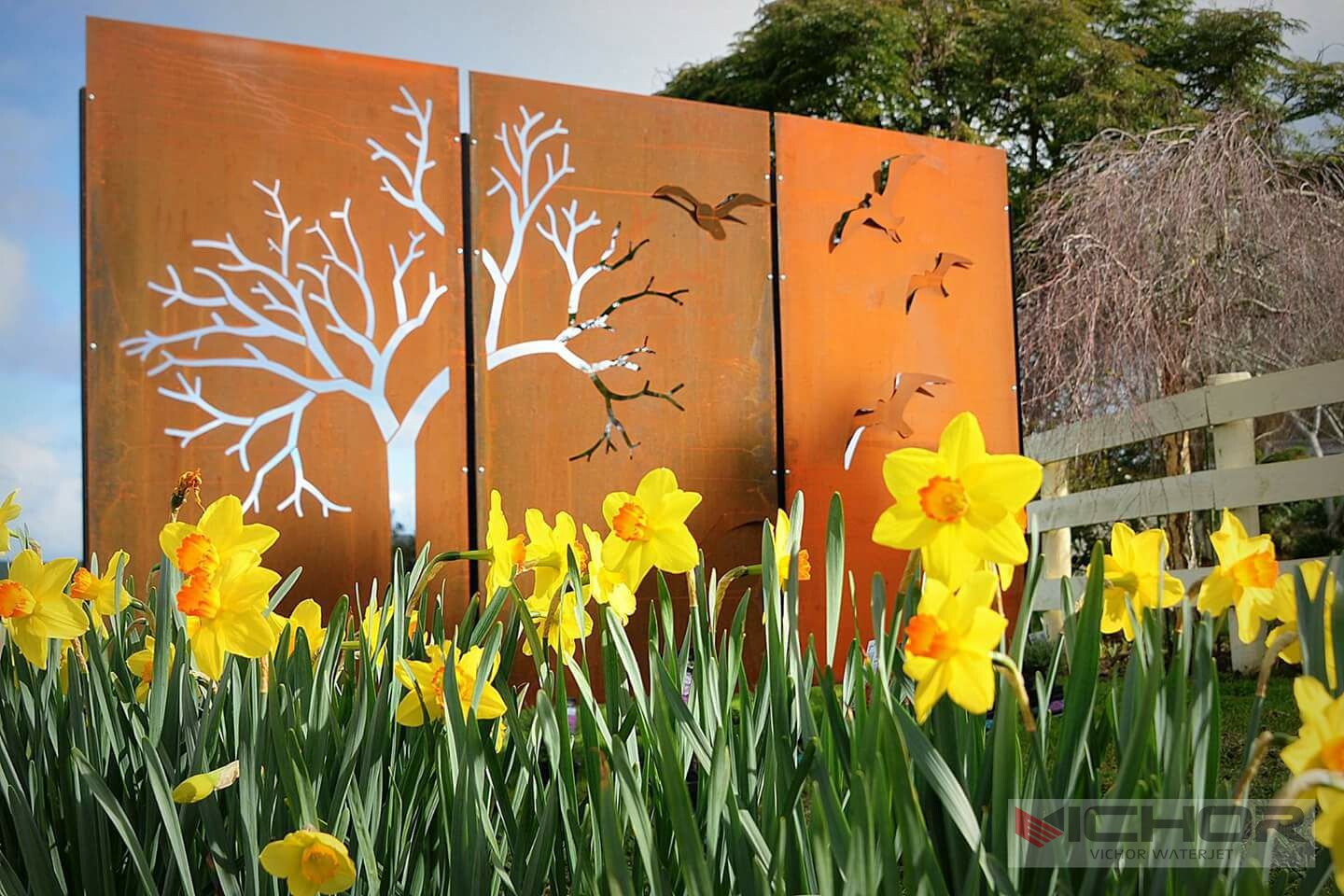
Water Jet Cutting Tables: Unlocking Precision and Versatility in Modern Manufacturing
In today’s fast-paced industrial landscape, efficiency and precision are paramount. One technology that stands out for its ability to deliver both is the water jet cutting table. This innovative equipment uses a high-pressure stream of water, often mixed with abrasives, to cut through a wide range of materials with exceptional accuracy. Whether you’re in metal fabrication, aerospace, or art design, understanding how a water jet cutting table can benefit your operations is crucial. In this article, we’ll dive deep into how these tables work, their applications, key features, types, pricing considerations, and the comprehensive services offered by industry leader VICHOR. By the end, you’ll have a clear picture of why investing in a water jet cutting table could be a game-changer for your business.
How Does a Water Jet Cutting Table Operate?
A water jet cutting table functions by harnessing the power of ultra-high-pressure water, typically generated by intensifier pumps that can reach pressures up to 90,000 psi. The process begins with a water source, which is pressurized and then forced through a small nozzle, creating a supersonic jet. For cutting harder materials like metals or stone, an abrasive substance, such as garnet, is introduced into the stream. This abrasive water jet cutting method allows the table to slice through materials with minimal heat-affected zones, preserving the integrity of the workpiece. The entire system is controlled by CNC (Computer Numerical Control) technology, ensuring precise movements and repeatable cuts. This cold-cutting process makes water jet cutting tables ideal for sensitive materials that could be damaged by thermal methods like laser or plasma cutting. By integrating advanced software, operators can design complex patterns and execute them with high accuracy, making the water jet cutting table a versatile tool in any workshop.
Applications of Water Jet Cutting Tables Across Industries
The versatility of a water jet cutting table makes it indispensable across numerous sectors. In manufacturing, it’s used for precision cutting of metals, composites, and plastics in automotive and aerospace industries, where tight tolerances are critical. For instance, companies rely on water jet cutting to produce engine components or aircraft parts without inducing stress cracks. In the construction and architecture fields, these tables handle stone, tile, and glass cutting for custom designs and installations. Artists and designers also leverage water jet cutting tables to create intricate sculptures and decorative elements from materials like wood and foam. Additionally, the food industry employs pure water jets for cutting products like pastries or meat, ensuring hygiene and minimal waste. The medical sector uses water jet cutting tables for manufacturing implants and devices from biocompatible materials. With such broad applications, a water jet cutting table proves to be a valuable asset, enhancing productivity and creativity while reducing material waste.
Key Features and Functions of a Modern Water Jet Cutting Table
Modern water jet cutting tables come packed with features that boost efficiency and user-friendliness. One standout function is the ability to perform 3D cutting, allowing for complex shapes and beveled edges. The integration of CNC systems enables automated operations, reducing human error and increasing throughput. Many tables include dynamic water jet cutting heads that adjust in real-time to maintain cut quality, even on uneven surfaces. Safety features, such as enclosed workspaces and emergency stop buttons, protect operators from high-pressure hazards. Moreover, water jet cutting tables often incorporate water recycling systems to minimize consumption and environmental impact. The use of abrasive water jet cutting capabilities extends their range to tough materials, while pure water jets handle softer substances. With options for multi-head setups, a single water jet cutting table can handle multiple jobs simultaneously, maximizing ROI. Brands like VICHOR enhance these functions with smart software that optimizes cutting paths for speed and material savings.
Types of Water Jet Cutting Tables Available Today
Water jet cutting tables are available in various configurations to suit different needs. The most common types include gantry-style tables, which are ideal for large-scale industrial applications due to their robust structure and wide cutting areas. For smaller shops or specialized tasks, portable water jet cutting tables offer flexibility and ease of movement. Another distinction is between pure water jet tables, used for soft materials, and abrasive water jet cutting tables, designed for metals and ceramics. Additionally, 5-axis water jet cutting tables provide enhanced maneuverability for intricate 3D cuts, surpassing the capabilities of standard 3-axis models. Some tables are tailored for specific industries, such as those with vacuum systems for holding down materials in high-precision environments. When selecting a water jet cutting table, factors like table size, pump pressure, and control system should align with your operational goals. VICHOR, for example, offers a range of customizable tables that cater to diverse requirements, ensuring you get the right fit for your projects.
Pricing Considerations for Water Jet Cutting Tables
The cost of a water jet cutting table can vary widely based on size, features, and brand. Entry-level models might start around $50,000, while high-end industrial systems can exceed $200,000. Key factors influencing price include the table’s working area, pump power, and additional features like advanced CNC controls or abrasive delivery systems. For instance, a basic water jet cutting table for light fabrication may be more affordable, but adding options like automatic height control or multi-head setups will increase the investment. Operating costs also play a role; abrasive materials, maintenance, and energy consumption for high-pressure pumps contribute to the total cost of ownership. It’s essential to consider long-term benefits, such as reduced waste and increased productivity, which can justify the initial outlay. Brands like VICHOR provide transparent pricing and financing options, helping businesses budget effectively. When evaluating a water jet cutting table, factor in potential savings from faster turnaround times and material efficiency to make an informed decision.
Services and Solutions from VICHOR in Water Jet Cutting
VICHOR has established itself as a global leader in the water jet cutting industry, offering end-to-end solutions that go beyond just equipment sales. Their services include custom design and installation of water jet cutting tables, tailored to specific client needs in sectors like heavy machinery and electronics. VICHOR provides comprehensive training programs to ensure operators maximize the table’s capabilities, along with ongoing technical support and maintenance packages to minimize downtime. They also develop integrated software solutions that enhance the functionality of their water jet cutting tables, enabling seamless CAD/CAM integration and real-time monitoring. For businesses looking to upgrade, VICHOR offers retrofit services to modernize existing setups with the latest abrasive water jet cutting technologies. Their focus on innovation and customer satisfaction makes them a trusted partner for companies aiming to leverage water jet cutting for competitive advantage. By choosing VICHOR, you gain access to a network of experts dedicated to optimizing your cutting processes.

Why Invest in a Water Jet Cutting Table for Your Business?
Investing in a water jet cutting table can transform your operations by delivering unmatched precision, versatility, and cost-efficiency. Unlike thermal cutting methods, a water jet cutting table produces no heat distortion, making it suitable for heat-sensitive materials and reducing post-processing needs. Its ability to cut virtually any material—from rubber and foam to titanium and granite—streamlines inventory and reduces the need for multiple machines. The environmental benefits are notable too, as water jet cutting uses minimal chemicals and can incorporate water recycling. With a water jet cutting table, you can achieve faster production cycles and higher quality outputs, leading to improved customer satisfaction and profitability. Companies like VICHOR enhance this value with reliable equipment and support, ensuring your investment pays off over time. As industries evolve, having a water jet cutting table positions your business to adapt quickly to new materials and design challenges.
Frequently Asked Questions About Water Jet Cutting Tables
Q1: What materials can a water jet cutting table handle?
A1: A water jet cutting table can cut a wide range of materials, including metals like steel and aluminum, composites, stone, glass, plastics, and even food products. The abrasive water jet cutting variant is especially effective for hard materials, while pure water jets work well for softer ones.
Q2: How accurate is a water jet cutting table?
A2: Water jet cutting tables typically achieve accuracies within ±0.005 inches, thanks to advanced CNC controls. This high precision makes them ideal for applications requiring tight tolerances, such as aerospace components or detailed artistic designs.
Q3: What are the maintenance requirements for a water jet cutting table?
A3: Regular maintenance includes checking high-pressure components, replacing nozzles and seals, and cleaning the abrasive delivery system. Proper water filtration and pump servicing are also crucial. Brands like VICHOR offer maintenance plans to keep your water jet cutting table running smoothly.
Q4: Can a water jet cutting table be used for 3D cutting?
A4: Yes, many modern water jet cutting tables, especially 5-axis models, support 3D cutting for complex shapes and beveled edges. This capability expands their use in industries like mold-making and sculpture.
Q5: How does the cost of a water jet cutting table compare to other cutting methods?
A5: While the initial investment in a water jet cutting table might be higher than some methods like plasma cutting, it offers lower operating costs for certain materials and reduces expenses related to heat damage and secondary processing. The versatility and efficiency often lead to a better long-term ROI.
In conclusion, a water jet cutting table is a powerful tool that combines precision, flexibility, and environmental friendliness. By understanding its operations, applications, and the solutions provided by leaders like VICHOR, you can make an informed choice to elevate your manufacturing capabilities. If you’re considering integrating this technology, reach out to experts for a tailored assessment.
continue reading
Related Posts
- 1350 words6.8 min read



